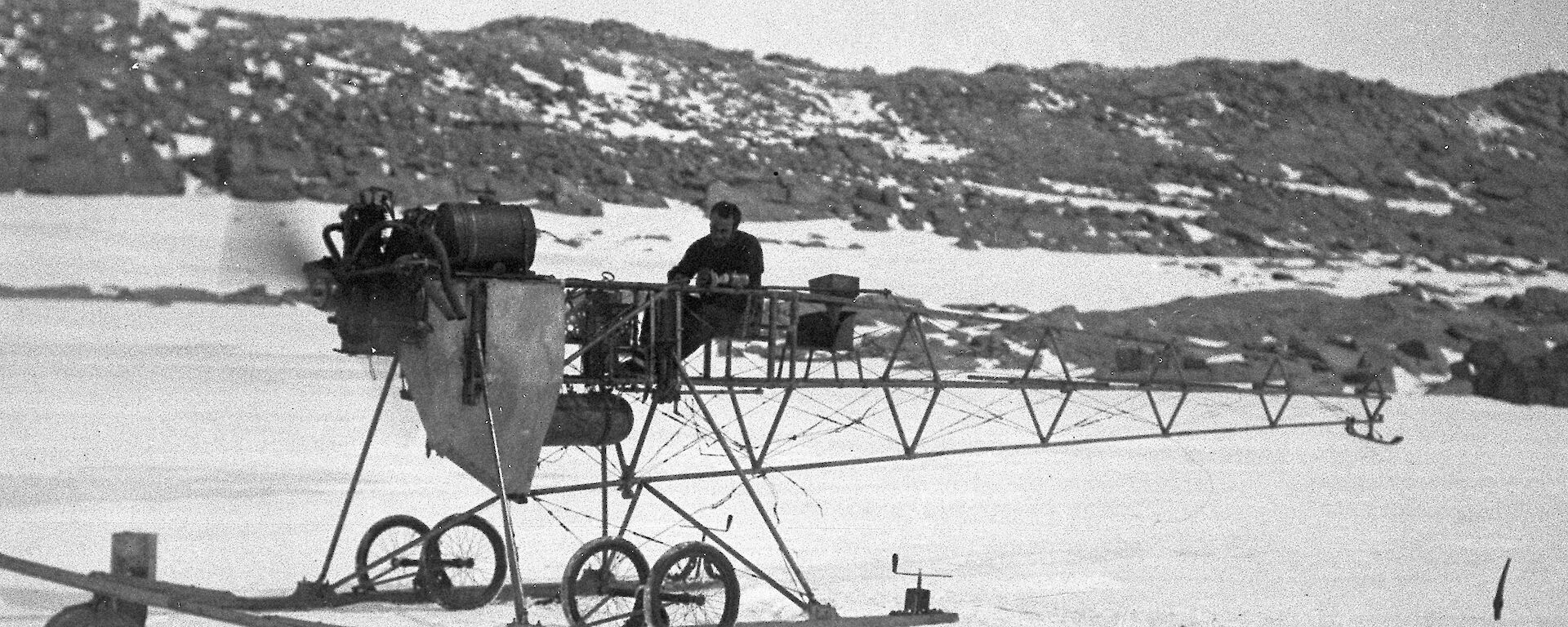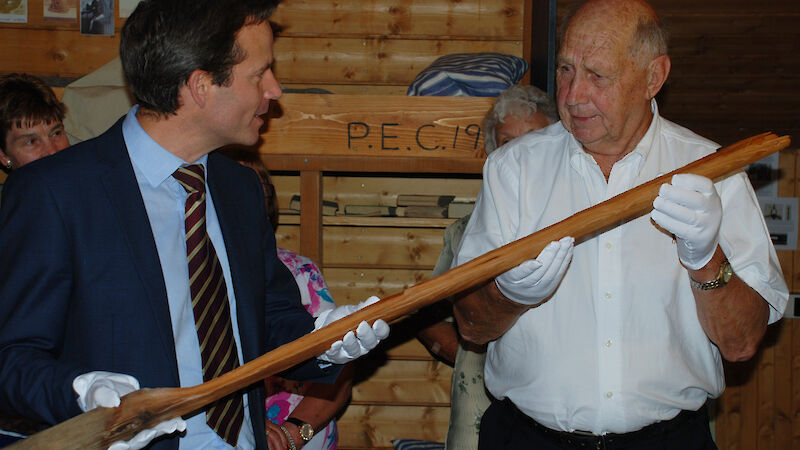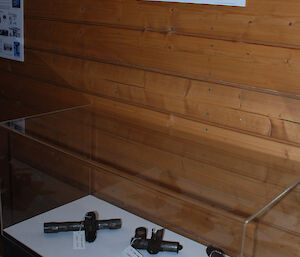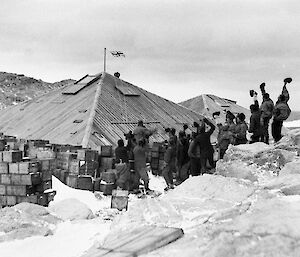Joint media release with the Mawson’s Huts Foundation
The first flagpole to fly the Australian flag in the Antarctic and parts of the first aircraft taken to the icy continent are now on display in Hobart at the Mawson’s Huts Replica Museum.
Recovered from Mawson’s Huts at Cape Denison, East Antarctica, between 2006 and 2010, the rare artefacts have been loaned to the Museum by the Australian Antarctic Division.
AAD General Manager, Strategies, Mr Charlton Clark said that Mawson’s expedition and the artefacts associated with that heroic era hold significant heritage value for all Australians.
“Both the flagpole and aircraft parts are important artefacts from Australia’s Antarctic history and we’re very pleased they can be enjoyed by the public at the Mawson’s Huts Replica Museum,” said Mr Clark.
The flagpole was attached to the apex of Mawson’s Huts when it was built in January 1912 by the Australasian Antarctic Expedition of 1911–14 which was led by Douglas Mawson.
Mawson’s Hut Foundation Chairman and CEO Mr David Jensen said that the pole was removed in 2006, with the Australian Antarctic Division’s approval, and returned for conservation treatment by the Foundation, which carries out conservation and maintenance on the Huts in partnership with the Australian Antarctic Division.
“After being battered by particles of ice and snow, driven by winds of more than 300km/h for nearly a century, the pole was in danger of being snapped off at its base and blown into the Southern Ocean just 60 metres away.
“It was replaced with an identical but new piece of Oregon pine. The original is here today, preserved and on display,” he said.
Mawson’s expedition achieved many firsts including taking the first aircraft to Antarctica. It never flew as its wings were removed when it crashed during a test flight in Adelaide just days before the expedition left for Antarctica in 1911.
The polar explorer decided to take it anyway and use it as a form of tractor to tow sledges along the ice, but it was not a great success. The engine seized in the freezing conditions and modifications had to be made to the fuselage.
“Mawson left a wonderful legacy for Australia, and these items provide visitors with a unique link to the past, helping to tell the story of those epic early years of Antarctic exploration”, said Mr Jensen.





